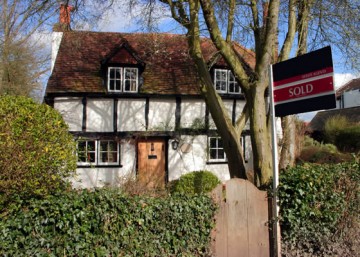Stamp Duty Land Tax (SDLT)
An overview of stamp duty, including detailed information about how much you have to pay when buying a house in the UK
Last updated 21 February 2022 at 16:32
Stamp Duty Land Tax history
Stamp Duty Land Tax (SDLT) – or Stamp Duty as it is more commonly known – is a tax which was introduced in 2003 and is generally payable on the purchase of land or property in the UK.
In the UK, all property transactions with a value of £40,000 or more must be reported to the HMRC to obtain a Land Transaction Certificate from the Land Registry. It can apply to any transfer of land or property and can cause a significant increase to the purchase price of any house.
Basic Stamp Duty rates and thresholds
If you do not already own a property in the UK or overseas, the amount of Stamp Duty which is owed to the HMRC is decided by thresholds as follows:
- Up to £125,000: 0%
- Between £125,000 and £250,000: 2%
- Between £250,000 and £925,0000: 5%
- Between £925,000 and £1,500,000: 10%
- Over £1,500,000: 12%
Higher Stamp Duty rates
In November 2015, the Government announced that, as of April 1st, 2016, an additional 3% levy will be applied to all property purchases over £40,000. This means that the follow Stamp Duty rates will apply when buying a residential property in the UK:
- Up to £125,000: 3%
- Between £125,000 and £250,000: 5%
- Between £250,000 and £925,0000: 8%
- Between £925,000 and £1,500,000: 13%
- Over £1,500,000: 15%
Who has to pay Stamp Duty?
Unlike with other UK taxes, everybody buying a residential property (or receiving a residential property as part of an exchange) in the UK will be subject to Stamp Duty rules. There are no exemptions, nor personal allowances.
This means that UK non-residents are also required to pay stamp duty.
Who has to pay the higher rate of Stamp Duty?
Once again, anybody who owns a residential property or even has a share in another residential property anywhere in the world is required to pay the higher rate of Stamp Duty – providing the share of the property ownership is valued at more than £40,000.
Stamp Duty and first time buyers
If you have never bought or owned a property in the UK you are classed as a "first time buyer". This means that, as of 22nd November 2017, you receive a special allowance with regards to buying your first property.
For first time buyers, there will no longer be any Stamp Duty to pay on properties bought for less than £300,000. If a property is bought by a first time buyer above that value, the first £300,000 will be exempt and then a 5% will be payable on the amount over £300,000.
For example, a first time buyer buying a house for £500,000 will pay no stamp duty on the initial £300,000, but 5% on the remaining £200,000.
When does the higher rate of Stamp Duty not apply?
If you are directly replacing your main residence, you will not be required to pay the higher rate of Stamp Duty. That means that if you are selling (or gifting) your current main residence and are buying another house as your main residence, you will not be required to pay the higher rate of Stamp Duty.
However, if you buy your new main residence before you sell your previous main residence, you will be required to pay the higher rate of Stamp Duty. In such situations, provided that you exchange on your previous main residence within 36 months, you should be entitled to a refund from the HMRC of the additional Stamp Duty paid.
Ways to minimise Stamp Duty charges
Stamp Duty is, in most cases, unavoidable – especially with the average house price in the UK being over £200,000 (according to the ONS in April 2016).
However, there may be ways to legitimately minimise your Stamp Duty.
Firstly, if the price of the property is close to the lower limit of a threshold, it may be possible to negotiate a reduction in the cost of the property to the lower threshold.
Also, if you are transferring a property during a separation or divorce, you may be able to transfer some or all of the property’s value to the other person.
Finally, it may be possible to transfer the deeds either as a gift or in your will and the person receiving the property may not be required to pay Stamp Duty.
How do you pay Stamp Duty?
Paying Stamp Duty is the responsibility of the person buying the house. However, while it is possible to do it yourself, during the purchasing process, it is normal for your solicitor to arrange for Stamp Duty to be paid.
Stamp Duty Land Tax returns must be submitted and paid within 30 days of completing the purchase of your new property. If you submit the return or make your payment late, you may incur a penalty of £100 for the first three months and an additional £100 if it is more than three months after completion.


